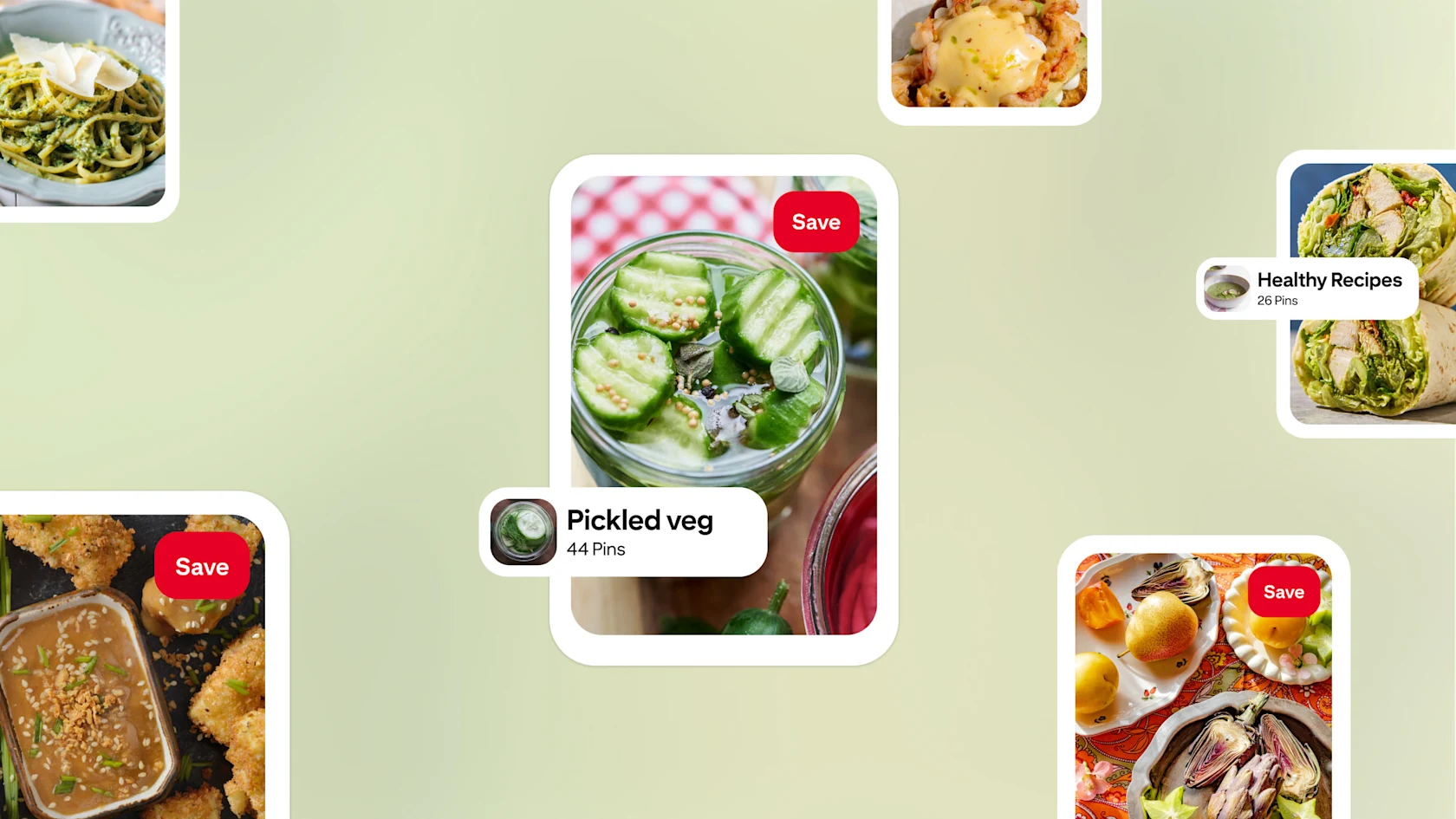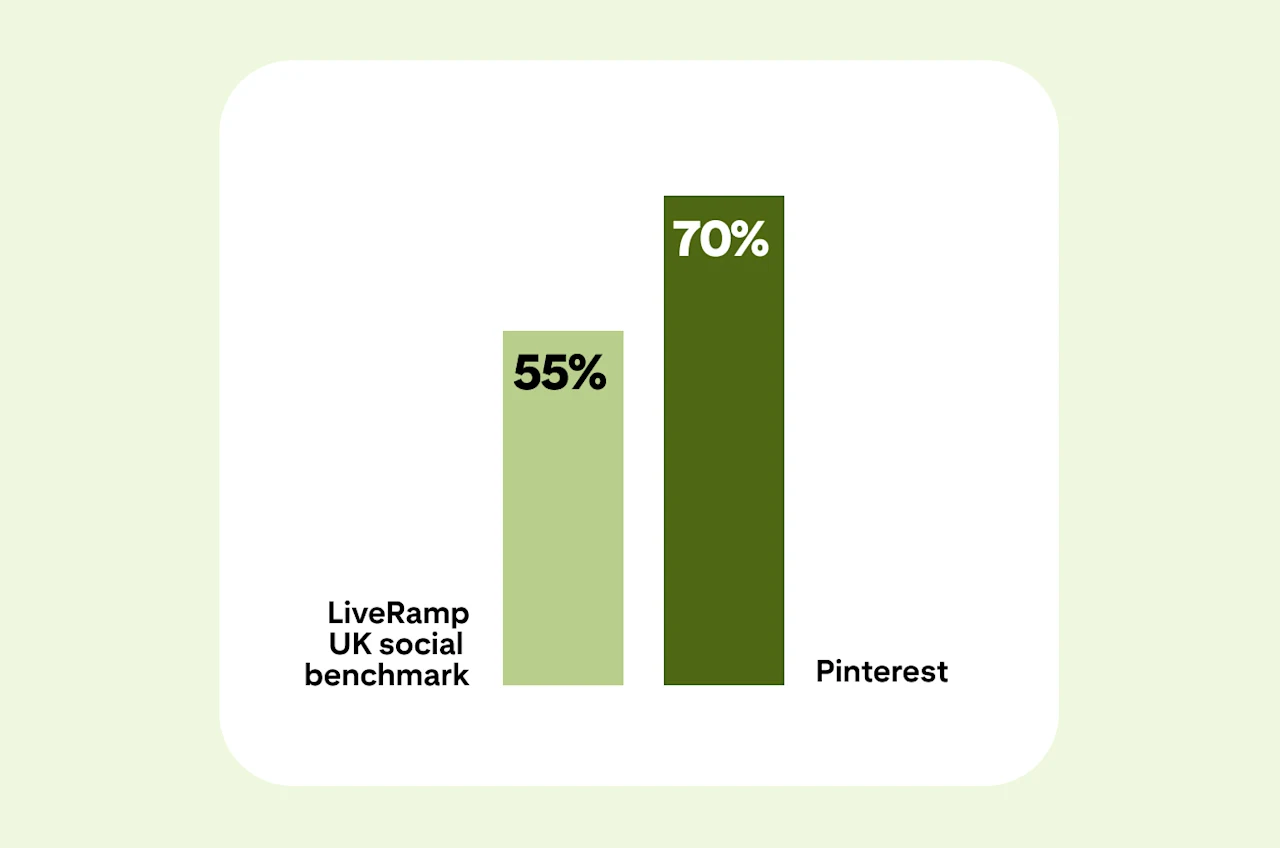How Pinterest can help you reach loyal, high-spending shoppers
25 July 2025 — Alex Matthews

What if your best customers aren't where your biggest budgets are spent? Research commissioned by Pinterest in collaboration with LiveRamp reveals that people on the platform spend 26% more annually than non-users, highlighting where high-value shoppers actually gather online.1
Picture this: You launch a brilliant campaign and hit millions of impressions. Your dashboard lights up and your team celebrates. But if your definition of success stops at reach, you could be missing the real drivers of ROI.
In a climate where every marketing pound is scrutinised, the hidden cost isn't just low ROAS. It’s missing your most valuable customers entirely. If you’re not targeting people who spend more, shop more and fill larger baskets, you could be leaving growth on the table.
That’s why we partnered with LiveRamp to measure the true incremental impact of Pinterest ads on offline sales in the UK, analysing real, anonymised in-store sales data from Tesco Clubcard shoppers. By separating audiences into test and control groups and connecting those to actual retail transactions, the analysis shows how Pinterest can drive business results.
Shoppers exposed to Pinterest campaigns spent 26% more each year3
Shoppers exposed to Pinterest campaigns visited stores 25% more often3
Shoppers exposed to Pinterest campaigns had baskets 6% larger on average3
Not all reach is created equal
There's a crucial difference between broad reach (the sheer quantity of people who see your ads) and effective reach (the quality of shoppers who actually engage and convert). The harsh truth is that some platforms excel at grabbing attention and endless scrolling. But when it's time to turn those interactions into sales, most fall short.
On Pinterest, the story is different. People linger with intent–a study has shown they scroll 1.5 times slower and generate 170% more total ad attention compared to other social platforms.2 That's because Pinterest doesn’t just serve up entertainment. It captures people in a planning mindset: actively searching for products, saving recipes and building shopping lists.
Unlocking hidden value: shoppers who spend more and buy more
Here's the under-appreciated reality: many marketers are still investing the most where casual browsers congregate, missing the moments when high-value shoppers plan and commit to purchases.
Analysis by LiveRamp, commissioned by Pinterest and using Tesco Clubcard data, shows that UK grocery shoppers exposed to campaigns on the platform spent 26% more annually, shopped 25% more frequently and had baskets 6% larger than those not reached by the ads.3
This analysis compared the actual shopping behaviour of customers exposed to Tesco campaigns on Pinterest with those who weren't, illustrating real-world differences in annual spend, shopping frequency and basket size.
Proof in the profits: the incrementality edge
What does this mean for marketers looking for more than reach? In a separate meta-analysis of 10 UK offline sales lift studies across groceries, meals and household goods, Pinterest campaigns achieved a statistically significant sales lift in 70% of cases—outpacing LiveRamp’s UK benchmark of 55%.4
Across all studies, average incremental sales lift was 21% higher and average spend per converted customer was 8x higher than on other social platforms.5 For the campaigns that delivered statistically significant lift, iROAS was 52% higher than LiveRamp’s UK social benchmark.6 All results were measured using the LiveRamp x Dunnhumby methodology for offline sales, benchmarked against LiveRamp’s UK social norms.

In a meta-analysis of 10 offline sales lift studies in the UK, Pinterest campaigns achieved a statistically significant sales lift in 70% of cases, outpacing LiveRamp’s UK benchmark of 55%.
Actionable playbook: how to reach and convert these shoppers
Now that you know where your high-value shoppers are, here’s how to reach them more effectively:
Show context, not just products
Highlight your products in real-life settings—family dinners, weekly meal prep, seasonal celebrations—so shoppers can picture them in their lives.Plan with your shoppers
Tap into meal planning, parties and seasonal occasions. Pinterest users organise their shopping lists in advance. Meet them at their planning moments.Measure what really matters
Don’t stop at reach or clicks. Use incrementality measurement, as in the LiveRamp studies, to know your real impact. Bonus: Our analysis of campaign data shows brands that raised their Pinterest budgets by 19% achieved, on average, more than triple the ROI.7 While every brand is different, leaning in with bigger investment can help maximise reach, frequency and overall return.
Stop missing your best buyers
Every day spent chasing broad reach is another day your high-value shoppers don’t see your message. Imagine if even a fraction of those missed opportunities started converting.
The evidence is here: For brands measuring incrementality, Pinterest can give you the untapped value you’ve been overlooking. Stop paying for passersby. Start investing where your next high-value customer is planning their next shop.

